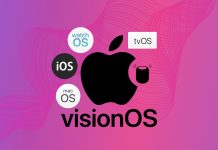Apple recently introduced new MacBook Pro models, but in addition to the expected new Intel Sandy Bridge processors, another new feature was included in the update—Thunderbolt.
What is Thunderbolt?
Thunderbolt is the rebranded Intel technology formerly called Light Peak. Essentially, with Thunderbolt, a single cable allows high-speed connections between your Mac and peripherals. One cable to rule them all!
How fast you may ask? Well, currently there are several options for connecting devices to your Mac, but Thunderbolt is 10 gigabits per second (bi-directional), which means it can transfer about 62% of an iTunes HD movie in one second, should it reach its maximum speed.
The cable is not very big, it is made of copper, the same material that is used within networking cables. There are 10 gigabit per second networking modules available, but you won’t see them in many home products yet.
The cable used to connect from your MacBook Pro, and presumably other Macs in the future, to your peripherals looks identical to the MiniDisplay Port that has been on Macs since 2008. The difference is now, instead of only supporting displays, the port can also support external hard drives, video projectors, and other stuff not yet on themarket.
Daisy-chaining its way into hearts everywhere
Thunderbolt also allows you to daisy-chain devices, much like Firewire. This allows you to connect up to seven devices in a chain, and allows you to connect more than one Thunderbolt device simultaneously.
Originally Light Peak was supposed to be optical-based. This is still possible in the future. There are not any devices, outside DisplayPort monitors, that support Thunderbolt on the market just yet. A couple have been announced but they won’t be available until later this year. So it might be a while until your Thunderbolt port gets put through the paces.
Hopefully this takes off, unlike FireWire 400/800.







